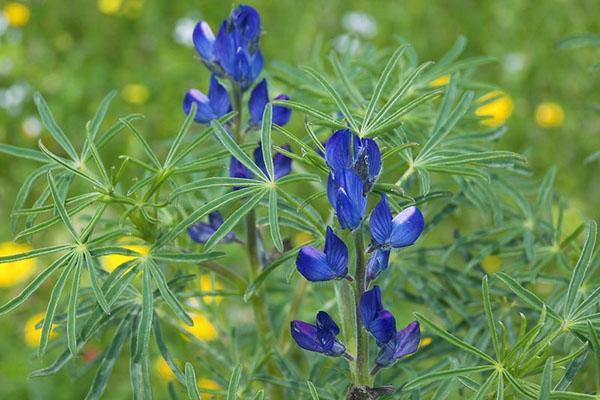When is the best time to sow annual lupine
 Many responsible gardeners are engaged in winter planting of vegetables in their garden. This allows you to get the first shoots in early spring, which means the harvest will be richer and longer. To prepare the soil for winter planting, annual lupine is used as an excellent green manure. The plant improves the quality of the soil.
Many responsible gardeners are engaged in winter planting of vegetables in their garden. This allows you to get the first shoots in early spring, which means the harvest will be richer and longer. To prepare the soil for winter planting, annual lupine is used as an excellent green manure. The plant improves the quality of the soil.
Why annual lupine
Of the advantages of the plant, the following can be distinguished:
- does not require careful maintenance, is not whimsical to watering and heat;
- has long roots extending into the ground at a distance of about 2 meters;
- has beautiful bright colors, which will allow not only to improve the soil, but also to decorate the garden;
- enriches the physical and chemical composition of the soil;
- increases fertility;
- generates nitrogenthat regenerates from the air.
According to previous studies, lupine roots contain bacteria that allow you to convert phosphates from the soil into useful minerals: phosphorus, potassium, calcium. At the same time, the plant blocks the development of soil pathogens and does not allow root rot to spread. This allows you to ultimately achieve amazing results in harvesting.
When to sow annual lupine
Specialists - gardeners unanimously say that it is best to plant annual lupine before planting winter vegetables before August 10. It is at this time that warm and dry weather is most often present, allowing the plant to quickly gain color.
In just a few weeks (about 2 months), the flower will be able to grow about 150 centners per hectare of green mass, as well as 150 centners of roots. This mass will contain on average: 115 kg of nitrogen, 120 kg of potassium, 30 kg of phosphorus. And it should be borne in mind that the nitrogen of lupine is 70 - 80% fixed from the air, which means it is twice as effective as nitrogen from manure.
Thus, in order for the soil recovery to be effective, several rules must be observed:
- Plant the annual lupine until August 10.
- Prepare in advance the beds in which vegetables will be planted.
- A day before planting, soak the lupine seeds in warm water.
- The depth of the seed furrows should not exceed 3 cm.
- If necessary, you can add some wood ash to the ridge to make the lupine feel even better.
Before the winter planting of vegetables, the stalks of the lupine are mown.